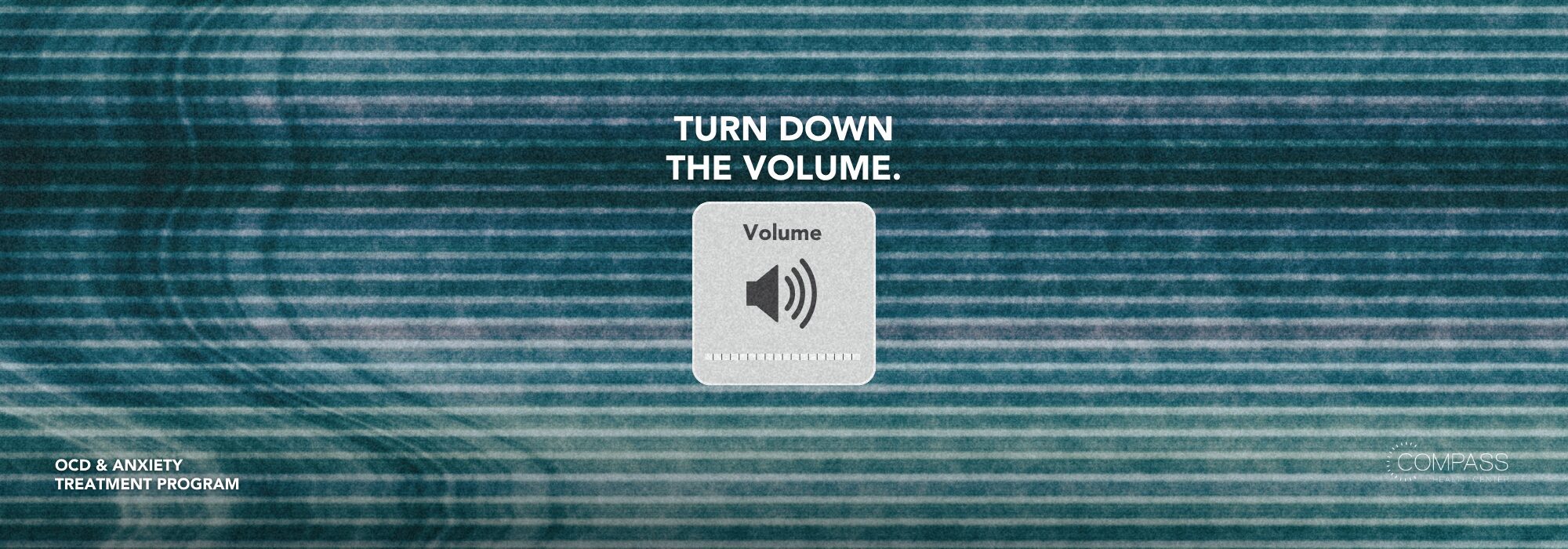
Why Talk Therapy Often Isn’t Enough for OCD—and What to Do Instead
Not all therapy is the right fit for every diagnosis. For people with OCD, traditional talk therapy can provide insight and validation, but it rarely leads to lasting relief. In some cases, it can even make symptoms worse. In this blog, Sarah Melton, LCSW, explains why common therapy approaches may fall short for OCD and what effective, evidence-based treatment looks like instead.
Someone walks by a child near a busy street, and has the thought “what if I pushed that child into traffic?” They feel anxious immediately and begin to think through all of the reasons they would never do something so awful. They confess this thought to friends and family and ask “Do you think I’m a bad person?”
“You would never!” their friends and family would say. “You are a good person! Just remember that!” The next time the thought comes up, and the fear and dread come into their stomach like an unwelcome guest, those platitudes don’t hold up.
As it turns out, this person has OCD. They might not know this, because OCD is often portrayed in the media as handwashing or flipping light switches. However, there are many different symptom dimensions of OCD that go beyond contamination fears and checking light switches.

Does Talk Therapy Work for OCD?
Imagine this individual now goes to therapy, with the expectation that the goal is to “talk things out.” They meet a new therapist, and if they’re lucky (and brave), they will share their intrusive thoughts. Disclosing obsessive thoughts is often difficult for an individual with OCD, particularly when they fall under the areas of violent, sexual or aggressive thoughts, and go against the person’s values.
So, when they share with their therapist that they think about pushing a child into traffic every day, their therapist may say something like, “Let’s explore why you’re having those thoughts,” or, “I really don’t think you would ever do that, given everything I know about you.” The therapist is trying to help, but in fact, they are unknowingly making the OCD worse by trying to talk through it—providing reassurance or exploring their childhood through traditional psychodynamic techniques.
In most cases, OCD symptoms do not respond to dwelling on “the why” of the obsessions but rather require the support of evidence-based treatments. Cognitive Behavioral Therapy with a focus on Exposure and Response Prevention (ERP) is the gold standard of treatment for OCD (Swierkosz-Lenart et al., 2023).
Does Talk Therapy Make OCD Worse?
Traditional talk therapy may consist of looking closely at the thoughts a patient is experiencing, trying to understand where they come from, and learn strategies to reframe or “change” them. Though these approaches might be helpful for someone without OCD, they are not likely to lead to a decrease in symptoms for individuals with OCD. In fact, an emphasis on the thoughts a person is having only reinforces the idea that their thoughts are important and need to be paid attention to, therefore increasing their power and the person’s desire to avoid or distract from them.
Exposure and Response Prevention, involves encountering your fear (in this case, the 0.0001% chance the person will push the child into traffic), and experiencing the associated distress, without engaging in the typical responses to try to reduce it.
While the person may logically know they are unlikely to ever act on their intrusive thought, the OCD gets hung up on the 0.0001% chance that they could. Because we cannot guarantee anything with 100% certainty, the ethos underlying OCD treatment is that people need to accept the 0.0001% chance they will do something awful and out of line with their character.
“How would one do this?” You may ask. With a fear as painful as acting violently toward a child, it can be hard to think about how one might encounter that fear. Maybe the exposure is walking down a busy street where families walk or children ride bikes, as they may avoid this to attempt to keep their intrusive thoughts at bay. It could also be writing a script about what would happen if they pushed a child into the street — what would they feel, what would they think?
Exposure response prevention is not about hoping for the worst-case scenario or doing anything to move toward that action but rather learning to tolerate the inevitable uncertainty that exists and shift our relationship to our thoughts.

Understanding OCD—It’s More Than Anxiety
OCD is the combination of obsessions—unwanted, repetitive thoughts or feelings that cause distress—and compulsions—repeated acts (either mental or physical) aimed at reducing the distress caused by the unwanted thoughts.
OCD is different than general stress from moving to a new place or worrying about an upcoming test or deadline. Obsessions cause severe distress and are often about things that are ego-dystonic, which means separate from someone’s understanding of themselves, rather than ego-syntonic, which means being in line with someone’s perception of themselves.
For example, someone who worries they will get a bad score on their test is experiencing a general worry, which aligns with their desire to do well in school.
A thought, however, that someone could push a child into traffic is ego-dystonic, as it does not align with their values or perception of themselves. If someone with OCD has an ego-dystonic thought like this, they may think “I wonder why I had that thought?” Or “What does it mean about me that I had this thought?” and high levels of distress and anxiety follow.
From here, they may try to further understand where the thoughts are coming from, engaging their obsessive thoughts further. A well-meaning therapist hoping to help someone examine the thoughts might ask questions about why they are having those thoughts and if they think they actually want to act on the awful violent thought. This is likely to result in someone becoming even further lost down the “OCD rabbit hole.”
Exposure and Response Prevention, on the other hand, is meant to help someone confront their fears without getting 100% certainty that their worst fear won’t come true.
So the treatment is, rather than trying to talk oneself out of the fear, to confront the 1% chance that this is true—by saying out loud, “Maybe I will push a child into traffic.”
What happens over time is that the fear starts to dissipate. The person habituates to the distress associated with these thoughts and is able to make space in their life for other things. They can think again, they can see again! They no longer must live beholden to the obsessive fears that hold them captive in their mind.
Why Talk Therapy Alone Doesn’t Work for OCD
An Overview: Why Exploratory Talk Therapy Isn’t Enough for OCD
- Talk therapy often focuses on exploring the past or uncovering the “root” of intrusive thoughts.
- For OCD, this approach can unintentionally fuel rumination and compulsions rather than reduce them.
- Questions like “Why am I thinking this?” echo the obsessive thought patterns at the core of the disorder.
- While patients may feel validated, progress often stalls without directly confronting fears.
- Effective OCD care requires structured, skills-based treatment—not open-ended dialogue.
What Works – The Gold Standard: Exposure and Response Prevention (ERP)
Exposure and Response Prevention, which is the gradual exposure to someone’s worst-case scenario fear without engaging in rituals (either mental or physical), is the most effective—and most intimidating—way to manage OCD fears.
ERP is not about “thinking your way out,” which is often emphasized in more traditional talk therapies, but about doing things you feel afraid of despite your OCD. Eventually, the goal is for the person who came into therapy to get back to their life as it was before OCD took over—to go to ball games, carnivals, and trips with their beloved nephews despite their OCD fears.
Other evidenced based treatments, such as ACT (Acceptance and Commitment Therapy) can be used in tandem with CBT with ERP (Swierkosz-Lenart, 2023). Using ACT as an adjunct treatment for OCD focuses on helping individuals increase acceptance of their internal experience and clarify their values to get back to the life they want.
Do they want to have a fulfilling romantic relationship but are afraid they will be “found out” as a bad person for having intrusive thoughts? If so, then working toward that goal of opening up to others and meeting new people
Cognitive Behavioral Therapy can be helpful in teaching people to put themselves in experiences or situations that feel uncomfortable to teach their brains, “I can handle this”—both the exposure to their OCD trigger, and the feelings of anxiety it brings up.
What Meaningful OCD Treatment Looks Like
- Exposure and Response Prevention (ERP) involves gradually facing fear or situations without engaging in compulsions. Repeating fears out loud can reduce their emotional intensity over time.
- ERP reinforces that tolerating discomfort—not avoiding it—leads to lasting change.
- ACT and mindfulness support ERP by building acceptance and helping individuals stay grounded in personal values.
- CBT strategies reinforce the idea: “I can handle this,” using real-life exposure and behavior-based change.

Addressing Co-Occurring Challenges
Many individuals with OCD also have co-occurring disorders including, but not limited to, substance use, depression, or other types of anxiety disorders. It is important to have an expert who can see each of these multifaceted parts of a person’s humanity and address each one accordingly.
That is why it is important to have a multi-disciplinary treatment team that includes therapists, psychiatrists or nursing professionals, and family therapists.
At Compass Health Center, each client has a treatment team made up of each of these disciplines in order to tailor care to each person’s unique needs. Professionals at Compass understand that OCD does not happen in isolation and can not be treated this way. Treatment focuses on the whole person, with a foundation of evidence-based care.
The Role of Medication—When and Why It’s Helpful
SSRIs are proven to reduce OCD symptoms and make ERP more manageable, but the research shows they are most effective in tandem with ERP rather than alone (Lingyun, 2022).
For people with moderate to severe OCD symptoms, medication can be the missing piece to make their ability to engage in ERP more manageable (Lingyun, 2022). Rather than thinking of medication like a “crutch,” I like to refer to it as a life raft—to help someone be able to chart the waters in the first place (the waters being the OCD and life in general). It’s hard to do the ERP work if you feel like you are drowning.
Finding the Right Care—What to Look For
You might be asking, “What should I do next?” As a family member or individual reading this article, you might realize you need more support than you originally thought. Finding a provider who specializes in OCD is the first step.
“When might I need more?” You may ask. If someone finds themselves struggling to function in their daily life, or facing suicidal or self-harm thoughts, it might be time to consider a more intensive treatment option. A program that includes exposure response prevention daily, in addition to Dialectical Behavior Therapy (DBT) and Acceptance and Commitment Therapy (ACT), can be incredibly helpful for folks who are struggling with more severe OCD symptoms.
Change—especially when it comes to a condition like OCD—takes active, specialized treatment that considers the entire person but prioritizes their most impairing and distressing symptoms.
8 Must-Know Tips for Finding Specialized OCD Support
- Start by recognizing when more support is needed. If OCD symptoms are getting in the way of everyday life or emotional well-being, it might be time to look for specialized care.
- Find a provider who truly understands OCD. Many therapists say they treat OCD, but not all are trained in Evidenced based treatment.
- Look for someone who uses Exposure and Response Prevention (ERP). ERP is the most effective treatment for OCD and should be part of the provider’s approach.
- Ask about their experience with ERP. It’s not just about whether they offer it—ask how often they use it and with what kinds of patients.
- Make sure Cognitive Behavioral Therapy (CBT) is part of the treatment. ERP falls under CBT, which also includes tools like challenging unhelpful thinking and catastrophizing.
- If symptoms are severe, consider a higher level of care. Struggles with daily functioning or thoughts of self-harm or suicide may mean a more intensive program is needed.
- Look for programs that include a mix of approaches. Treatments like Dialectical Behavior Therapy (DBT) and Acceptance and Commitment Therapy (ACT) can help address complex or co-occurring concerns.
- Avoid talk therapy that only explores where intrusive thoughts come from. Without active, targeted treatment, this kind of conversation can actually make symptoms worse.

OCD Isn’t a Choice—but Taking Action with the Right Care is
Thankfully, OCD is treatable—even if past therapy hasn’t worked. If therapy has left you feeling more confused in the past, you are not alone. It takes an average of 12.78 years for people with OCD to be properly diagnosed and another 1.5 years to be treated after diagnosis (Ziegler et al., 2021). That means the average person is waiting 14 years from the time their symptoms begin to when they get effective treatment.
It takes a skilled and informed clinician—or team of clinicians—to treat OCD effectively. If you are experiencing OCD symptoms, and are ready to start treatment, reach out to an intake specialist today. Compass Health Center offers same-day intakes, allowing you to speak with someone who can point you in the right direction of treatment that best addresses your symptoms.
Compass’s OCD & Anxiety Program offers 5-day-a-week Exposure and Response Prevention and gives you a higher dosage of the specialized care you might receive with an outpatient provider. Your team of therapists will assist you in designing and implementing exposures aimed at treating your most distressing intrusive thoughts—so you don’t have to do it alone.
People often think about OCD as handwashing or checking stoves. They use “OCD” as an adjective to describe their tendency to color-coordinate their closet or keep a clean house. The truth is much more distressing. OCD can be a pervasive and incredibly debilitating disease. The representation of it in the media only scratches the surface of what OCD really is.
Having access to professionals who truly understand the cycle of OCD and can provide appropriate, evidence-based treatment like ERP is the best proven way to heal from moderate to severe OCD.
Perhaps OCD is part of your story, but you’ve been dealing with something more acute and pressing recently—whether that’s a recent trauma or a life change. Because Compass offers a wide variety of programming to address various diagnoses, you have the option to customize your care to meet your needs, with the flexibility to add OCD treatment later or integrate it alongside other concerns.


